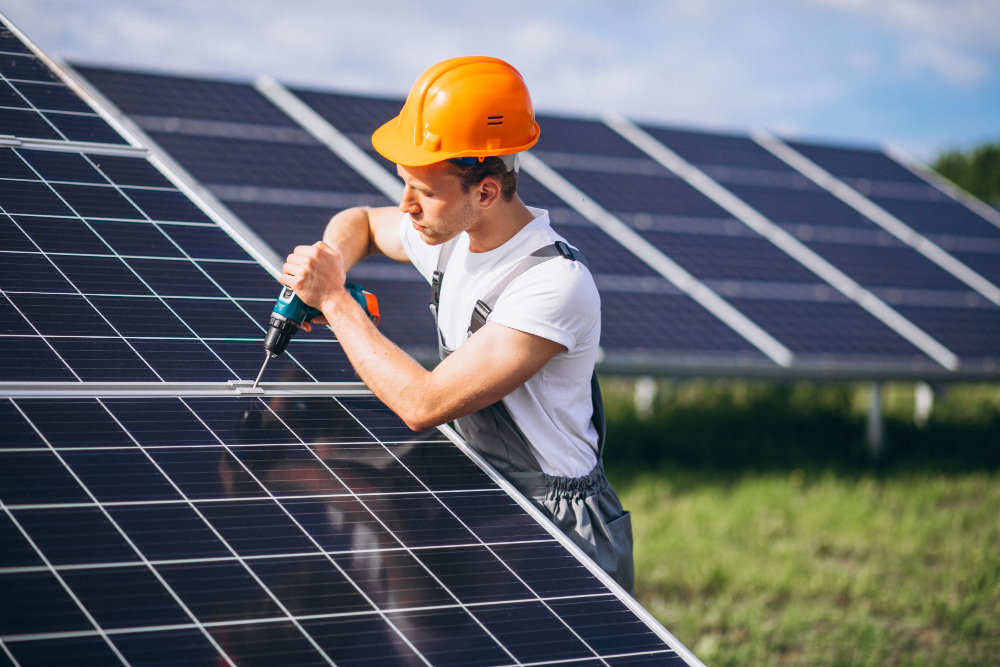
How to buying a Portable Solar Panel
Working from a sofa in the living room may be more fun than a hidden closet, but in both settings you will feel attached to an electrical plug. Fortunately, there's a quick way to cut this cord and move the workspace out - without having to worry about recharging the batteries.
Portable solar panels are gaining in popularity because people are looking for a simple and durable way to soak their devices when they are off the grid. Whether you are an avid backpacker entering the deep desert or a sunbather hoping to do some work in your local park, there is a personalized solar panel to suit your needs.
Why buy a portable solar panel?
If you think of solar panels, you can probably imagine a large array of shiny black boards in the corner of the sun. Portable versions of such stationary arrays use exactly the same energy recovery technology, easily assembled into lightweight, compact designs. This makes them ideal for a variety of uses, from driving a fun car to charging electronics on the go.
Portable solar panels are also a great way to get acquainted with renewable energy sources. Even if you're not ready to install a skylight in your home, charging your phone or laptop with a small panel can help you measure the light levels in your area and find out how good the sun is, the energy that meets your needs. Things to keep in mind
Although most portable solar panels are easy to set up and easy to use, there are always many things to consider when investing in new technology. We've put together what we consider to be the most important factors to consider before you start running outdoors.
Power consumption
Start by thinking about how much electricity you need. Some custom panels are available in many different wattages - the net power rate. For example, the Goal Zero Boulder Briefcase, a panel folded into a compact rectangle with handles for easy carrying, is available in 50-watt, 100-watt and 200-watt types. Higher power designs are larger and more expensive, so the best panel for you will depend on what electronics you expect to use. When you're ready, read our guide on how to charge your device properly.
Low-power panels will not prove unnecessary in your mission outside of traditional energy sources, but they can charge your device more slowly than you are used to. For best results, look at the details of your device to see how much power your charging cables allow. This will help prevent you from purchasing a panel with a performance that exceeds the limit of your devices. Energy storage options
Many portable panels have the necessary cabling and batteries that you need to store electricity for later. The power bank is especially useful if you hope to use solar energy when there is no daylight: illuminate the campsite at night, charge your phone during a storm or keep your laptop running. Walking on a cloudy afternoon are good examples. If you want to store solar energy, consider purchasing a kit that contains the necessary batteries, inverters and cables.
It is also possible to skip accessories and use your solar energy immediately. Many portable panels have USB ports that allow you to charge electronics instantly. The small and light variant may be all you need to keep your phone or laptop running on a sunny day. The aforementioned batteries and cables will also help keep the cost of your solar system low.
Portability
The size, weight and design of your personal solar panel determine portability. If you are planning to drive a free field to complete your work, a heavier and larger panel may be a good idea: you can place it in the car until you reach the finish line, so large - deployed and weight are no problem. On the other hand, backpackers and tourists should choose small, lightweight panels that will not be a burden on long outdoor trips. Check the weight and dimensions of the panel as well as the accessories before purchasing.
Weather resistance
While most solar panels are at least somewhat weatherproof, not all are actually waterproof. The last thing you want is to destroy your new gadget and get stuck without power, simply because it's not designed to withstand the elements. Depending on the intensity of your outdoor trips and the weather in your area, find out the hardness of your panel before you buy.
Price
The last thing to consider is how much money you want to spend on your new portable solar panel. It is unlikely that such a small panel would pay for the electricity it produces, but the freedom and access it will give you is even more valuable.
The price will vary depending on the performance of your panel, energy storage components and total volume. It is possible to find small power supplies with solar components within range, but a larger (and more powerful) panel can cost several hundred dollars. Whatever your needs are, there is a panel to help you get out of the slump.